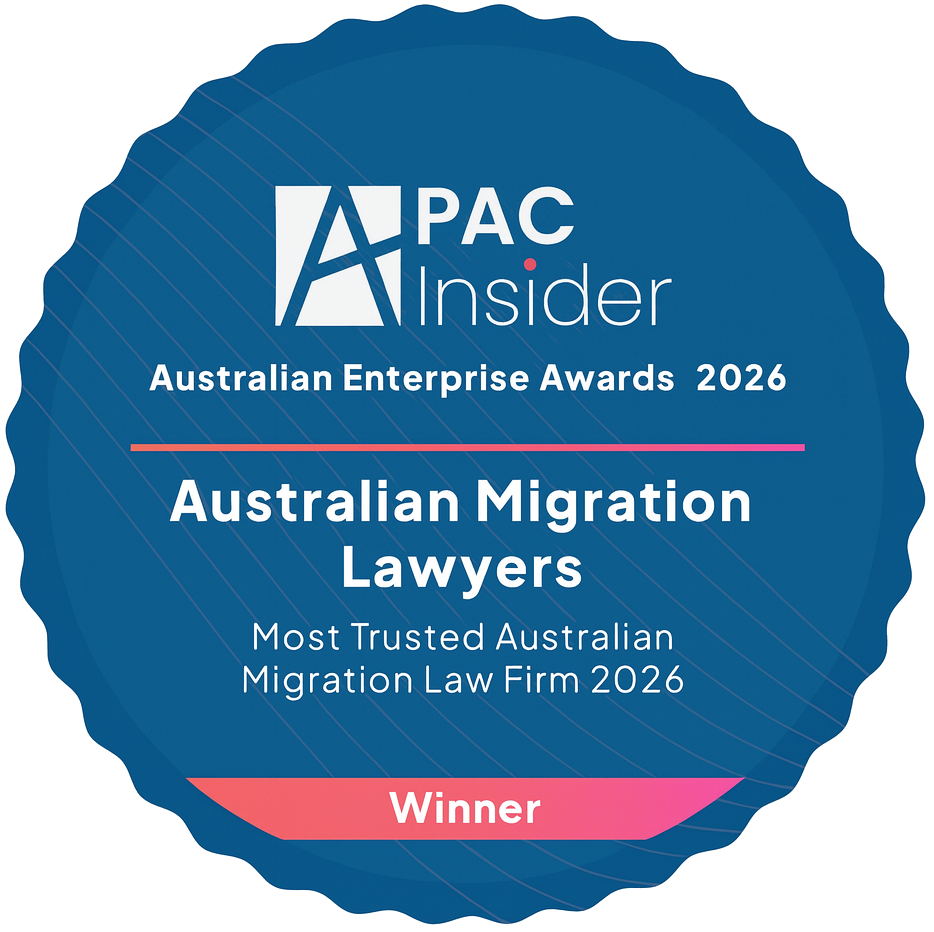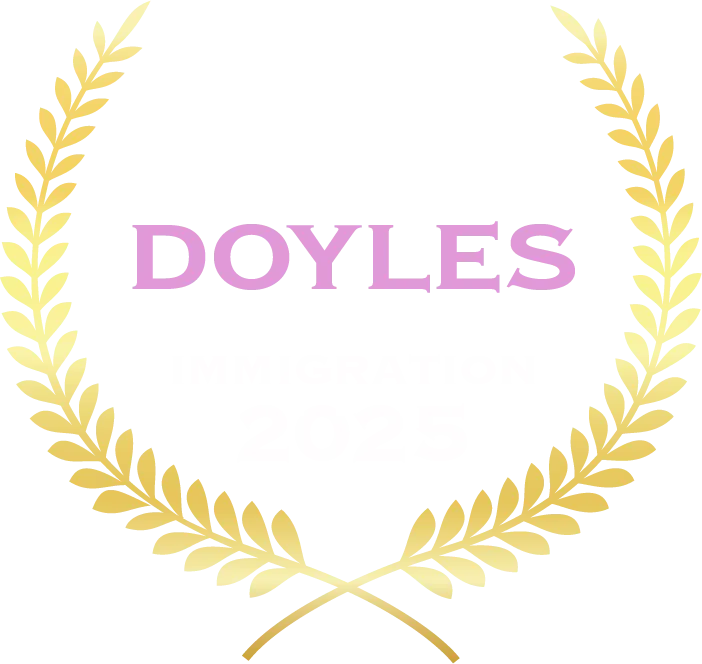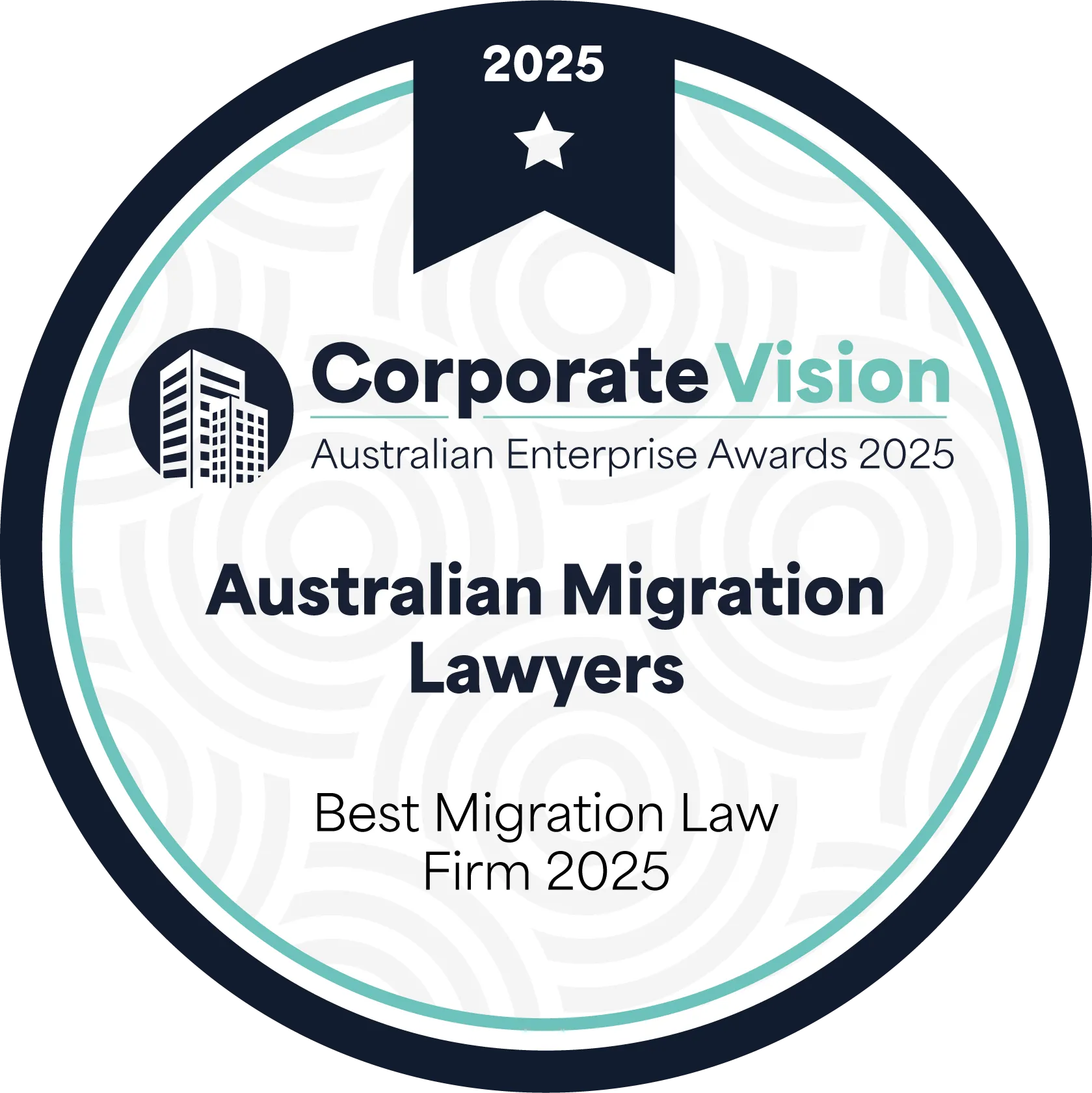Australia's largest independent migration law firm. Open 7 days! Book here.
Need help? We are available 7 days a week.

.webp)

Winner of Most Trusted Australian Migration Law Firm 2023-2026

Ranked 1st for migration law in 2023, 2024 & 2025

Ranked in the top migration lawyers 2023, 2024 & 2025

Ranked the best migration law firm 2024 & 2025

Are you an employer looking to sponsor skilled workers, or a professional seeking a pathway to work in Australia? The Skills in Demand (SID) visa (subclass 482) and the Skilled Employer Sponsored Regional (Provisional) visa (subclass 494) are key employer sponsored visas. This guide will walk you through the crucial steps involved, outlining what you need to approach each stage correctly and maximise your prospects for success.
Watch the video below to learn more about 482 visa process:
The 482 visa, now known as the Skills in Demand visa, is a temporary visa designed for skilled workers in specified occupations. This employer sponsored visa enables regional employers to sponsor individuals with appropriate skills and qualifications when a suitably skilled Australian worker cannot be found, thus helping to address identified labour shortages. The visa application process involves three main stages: the Standard Business Sponsorship (SBS), Nomination, and the Visa Application.
The 494 visa, the Skilled Employer Sponsored Regional (Provisional) visa, also shares this three-stage process and offers a clear pathway to permanent residency for visa holders in regional Australia. This provisional visa provides a pathway to a permanent visa, such as the subclass 191, in some circumstances.
To begin sponsoring skilled workers through the 482 and 494 visa subclasses, your business must first apply to become an Approved Sponsor. As an employer, you must demonstrate that your business is legally established and a lawfully operating business in Australia.
An Australian business will require an active Australian Business Number (ABN) or Australian Registered Body Number (ARBN), an Australian Securities and Investments Commission (ASIC) company extract, and Australian Stock Exchange (ASX) listing registration (if applicable). An overseas business will also need evidence of registration in their country of operation.
If your business structure includes a trust, joint venture, or franchise, you will need to include the relevant agreements or deeds.
You must also prove that your registered business is currently operating. The evidentiary burden is higher for smaller and newer businesses. For larger or established organisations, an annual financial report is usually sufficient. For small or recently established businesses, you can provide evidence such as a recent tax return, several business activity statements, and bank statements.
For a new business, you can provide:
If your business is not yet operating in Australia, you must demonstrate your intention to set up in Australia. This can include a business expansion plan, a joint venture agreement, or a contract with a party in Australia.
Australian Migration Lawyers also recommends including a submission that demonstrates your business’s commitment to employing local Australian workers and your efforts in the local labour market.
It is critical that your business does not have any adverse information recorded against it, such as being in liquidation or a history of failures to satisfy sponsorship obligations. A strong record of compliance is vital for sponsorship approval, ensuring the Australian Government views your business favourably.
You will need to complete the online sponsorship application form on ImmiAccount and upload all required documents. The government fee for the SBS application is currently $420. This fee is non-refundable.
Processing times for the SBS application are not published, but can range from between 1-3 months.
Once granted, your business will only need to apply for an SBS once every 5 years, making it an efficient system for ongoing employer sponsorship.
Once your business is an approved sponsor, the next step is the employer nomination. This stage is arguably one of the most important and often misunderstood steps in the entire 482 visa process. This is where many employers get caught out, as one mistake in the nomination application can undermine the entire application.
The nomination is where an Australian employer formally informs the Australian Government about the skilled position they need to fill. The employer must show the position is genuine, required, and identify the specific person they wish to employ. The position must fall under one of the three streams within the Skills in Demand visa.
For more detailed information on Labour Agreements and labour agreement streams, consult our dedicated online resources.
The government is stringent in ensuring a role is not created simply to facilitate an individual’s entry into Australia. A case officer will assess if the role is genuine. This will be based on factors like:
The nominated role must typically be full-time, meaning 38 hours per week. Part-time roles may be accepted for certain occupations.
The Australian Government is clear: sponsoring overseas skilled workers should never be a method to underpay employees. Your nomination application can be rejected if you do not offer a fair wage.
The salary must meet the minimum threshold for the chosen stream. For the Core Skills Pathway, for example, the salary must be at least $76,515. However, merely meeting the threshold is not enough. You must also demonstrate the wage matches the Annual Market Salary Rate: what an Australian worker would earn for the same nominated occupation in the same location. Evidence can include contracts of existing staff or external proof like job advertisements and salary surveys. Failing to meet these requirements is a common reason for refusal.
The final stage is the visa application itself. Many assume this is the easiest part, but this is where many applications fail due to simple but costly mistakes.
The applicant must prove they have the right qualifications and relevant work experience for the nominated occupation. You must provide documents such as qualifications, employment contracts, tax returns, detailed reference letters, and payslips. The Department of Home Affairs cross-references this with ANZSCO.
Any inconsistencies, such as a reference letter describing duties that do not match the nominated occupation, will be flagged. Case officers are trained to identify these issues.
Applicants must meet strict health and character requirements. A police clearance certificate is required from every country you have lived in for more than 12 months in the past 10 years. Any undisclosed conviction or discrepancy can lead to refusal under the character requirements.
For health, under Public Interest Criteria 4005 and 4007, your application could be refused if a pre-existing condition is likely to incur significant costs for the Australian community or add pressure to public health services. A health waiver may be possible, but is not easily granted. You must provide evidence that you meet all the eligibility criteria.
The financial commitment for a 482 visa can be substantial. Between the base visa charge, additional applicant fees for family members, health examinations, and police checks, the expenses add up.
To help you plan, Australian Migration Lawyers has developed a free Fee Calculator on our website. This tool provides an estimate based on your specific situation, helping both sponsors and nominees understand the full financial commitment.
Most visa refusals at this stage happen because of insufficient or poor documentation.
Your visa application should be presented like a meticulously researched legal case. Every claim must be substantiated by solid evidence. This gives you the best chance to live and work in Australia and pursue your goals.
Under Condition 8607, 482 visa holders must only work for their sponsoring employer in the nominated occupation. This means no freelancing or side employment. Previously, a visa holder had 90 days to find a new sponsor if they ceased employment. This period has been extended. Visa holders now have up to 180 days at a time, and a total of 365 days over their visa period, to secure a new sponsor or apply for a different visa.
Failing at any stage means losing your job offer, sponsorship, and months of effort. The 482 visa process is your gateway to an Australian career and a potential permanent residency pathway, so do not take unnecessary risks.
If you are unsure about your documents, concerned about meeting the eligibility requirements, or simply want peace of mind, contact our team at Australian Migration Lawyers. We have assisted hundreds of professionals, from welders to data scientists, in navigating this process smoothly. We provide expert advice that is crucial for navigating the visa process.
Book a consultation today to discuss your visa options and ensure your application is positioned for success.

We have created comprehensive visa guides that outline the ins and outs of visa applications. Get yours today.